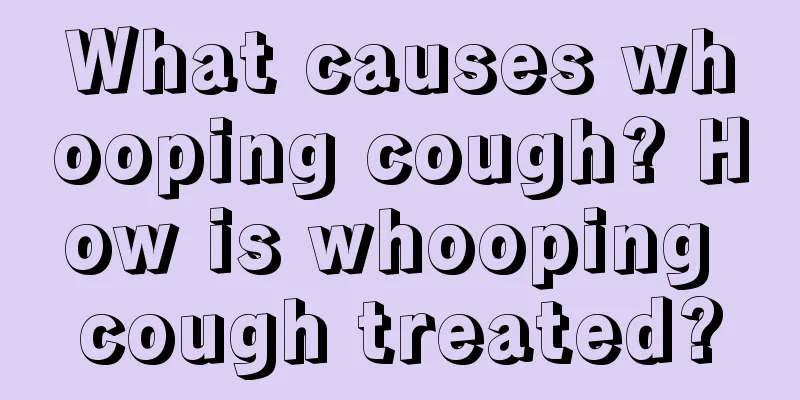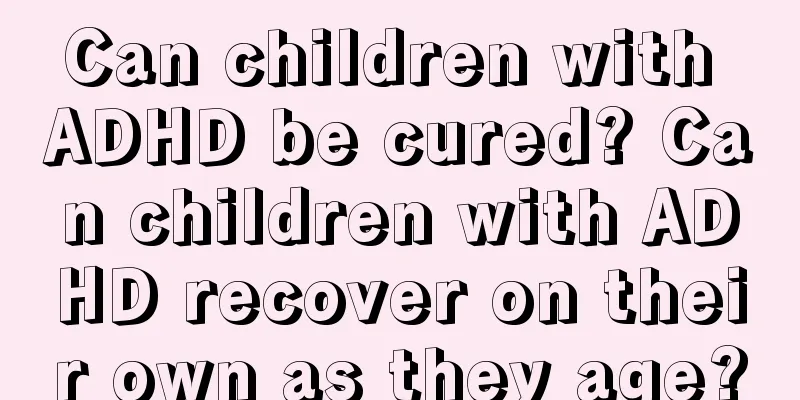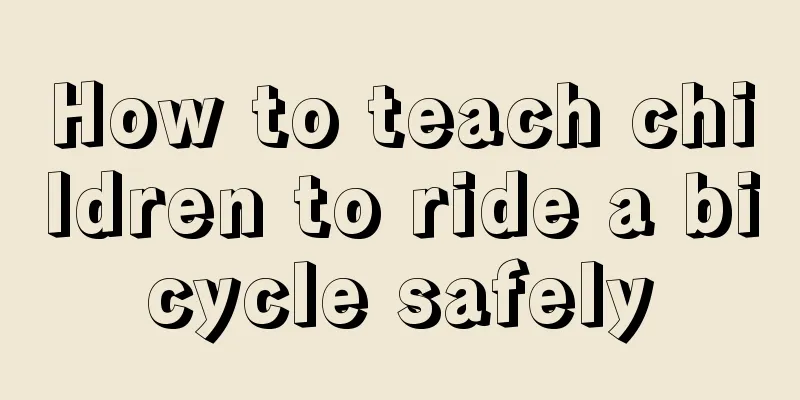What causes whooping cough? How is whooping cough treated?

|
The symptoms of whooping cough are similar to those of a cold, but mothers should still be careful because whooping cough is more dangerous than a cold when it is severe. Learn some knowledge about whooping cough and easily deal with diseases of all sizes in life. For information about what causes whooping cough and how to treat it, read the following article to learn more. Causes of whooping coughAfter Bordetella pertussis invades the respiratory tract, it attaches to the cilia of the respiratory epithelial cells, reproduces and produces endotoxins, causing ciliary dyskinesia and destruction of ciliated cells. The bronchial mucosa is widely inflamed, mucus secretions increase, and cilia are damaged: the accumulated secretions constantly stimulate the respiratory nerve endings, which are transmitted to the cerebral cortex, reflexively causing spasmodic coughs and forming an excitation focus in the cough center of the cerebral cortex. Therefore, during the recovery period or several months after recovery, factors such as crying can still induce whooping coughs. 1. Many babies have not received timely or complete vaccinations (DPT vaccine). Some are unwilling to receive vaccinations because of the serious side effects of this vaccine. 2. Bordetella pertussis has "adapted" to the pertussis vaccine and developed "immune resistance", making the original vaccine ineffective. 3. The pathogens that cause whooping cough are more complicated. In addition to Bordetella pertussis, Bordetella parapertussis can also cause whooping cough-like symptoms. Clinical manifestations of whooping cough1. The incubation period is generally 7 to 10 days and can be as long as 21 days. 2. The clinical course can be divided into three stages. (1) Catarrhal stage: From the onset of the disease to the onset of spasmodic cough, it usually takes about 1 to 2 weeks. The initial symptoms are similar to those of a cold. In addition to the cough, there may be runny nose, sneezing, and mild fever, or just a dry cough that does not attract attention. When other symptoms gradually disappear, the cough becomes worse, becoming lighter during the day and heavier at night, and gradually becomes spasmodic. (2) Spasmodic cough stage: generally lasts 2 to 6 weeks (from a few days to more than 2 months). This stage is characterized by paroxysmal and spasmodic coughs. During an attack, there are frequent and uninterrupted short coughs of more than ten or dozens of times as an exhalation state, and finally a deep inhalation. Because the throat is still in a spasmodic state at this time, it is accompanied by a high-pitched cock-like roar, followed by the next spasmodic cough. This attack is repeated many times until sticky sputum is coughed up. When the cough is severe, there may be incontinence of stool and urine, clenched fists with elbows bent, eyes wide open, red face, tears and snot, head tilted forward, mouth open with tongue sticking out, lips cyanosis, etc., with extremely painful expressions, and it ends after vomiting. Mild cases have several times a day, severe cases have dozens of times a day, mostly at night. Running, eating, cold, smoke, crying and quarreling can all induce it. There are generally no obvious signs before the attack. (3) Intermittent period: No special situation. During spasmodic cough, the pressure of the superior vena cava increases, the return blood flow is blocked and there is blood stasis. Facial and eyelid swelling is common. When the cough is severe, epistaxis, hemoptysis and subconjunctival hemorrhage may occur, and even intracranial hemorrhage may occur. Frequent spasmodic cough often affects sleep, causing the child to be tired, not active, and have anorexia. In addition, vomiting and secondary infection may cause nutritional disorders. If there is no secondary infection, the child's body temperature is generally normal, and there are no positive signs in the lungs or irregular rumbling. 3. Newborns and infants There is usually no typical spasmodic cough, but it manifests as paroxysmal breath-holding cyanosis, which can easily lead to suffocation and convulsions. The breathing movement may stop during the exhalation phase, and the heart rate will first increase, then slow down or even stop. If artificial respiration, oxygen administration and other active rescue are not performed in time, death from suffocation may occur. 4. Whooping cough in adults In recent years, there has been an increasing trend of whooping cough in adolescents and adults, accounting for 10.2% of the total cases during epidemics. A group of adults with whooping cough confirmed by bacterial culture had an average age of 35 years old, with typical symptoms and vomiting after coughing, but also only dry cough for a few weeks, and rare complications. Most of them can still insist on working. Although they do not suffer much, they can be a source of infection, especially threatening children, and should be taken seriously. Treatment for whooping cough1. Drug treatment 1. Antibiotic treatment Antibiotic treatment is effective in the early stage of the disease, i.e., the catarrhal stage. The effect is poor in the spasmodic cough stage, but it can shorten the time of bacterial excretion. Erythromycin 30-50 mg/(kg·d) is the first choice, and the medication is used for 7-14 days. Chloramphenicol 30-50 mg/(kg·d) can be used as the second choice. In addition, ampicillin and gentamicin can also be used for intravenous drip or intramuscular injection. Sulfadimethoxazole/trimethoprim (compound sulfadimethoxazole) is also effective. Recently, a new generation of macrolide antibiotics such as roxithromycin and azithromycin also have obvious effects. The course of antibacterial treatment is 2 weeks. 2. Adrenal cortex hormone can alleviate symptoms and shorten the course of the disease, but attention should be paid to the side effects of the drug. For infants aged 6 to 9 months, betamethasone 0.075 mg/(kg·d) or hydrocortisone 30 mg/(kg·d) can be used for intramuscular injection, and the dosage should be gradually reduced after 2 days, and the drug should be discontinued after 7 to 8 days. 3. Pertussis immune globulin (P-IVIG) 2.5ml (400μg/ml), intramuscular injection, once a day, for 3 to 5 days. It is suitable for critically ill children. The dose for infants is halved. 2. General treatment Isolate according to respiratory infectious diseases, keep the room quiet, fresh air, appropriate temperature and humidity, and avoid noise and stimulation. To keep the airway open and facilitate the discharge of secretions, pay attention to lowering the head and patting the back when infants and young children have spasmodic coughs. Those with a lot of sputum should suction the sputum in time. To prevent sudden suffocation of infants, especially at night, there should be someone to watch over them. Once suffocation occurs, artificial respiration, suction of sputum, oxygenation, and mouth-to-mouth respiration should be performed in time. Infants with respiratory arrest or convulsions can be intubated and treated with continuous positive pressure oxygen therapy to improve respiratory function or reduce hypoxia, fight against existing atelectasis, and relieve laryngeal and bronchial spasms. Salbutamol (salbutamol) 0.3mg/(kg·d), taken orally in 3 times, can relieve spasm symptoms and relieve breathing difficulties in infants and young children. If the application effect is not good, sedatives can be used, such as phenobarbital 2-3 mg/(kg·time) or chlorpromazine 0.5-1.0 mg/(kg·time), 2 times/day or 3 times/day, orally. 3. Treatment of complications (1) Combined with lung infection: give antibiotics, such as penicillin and cephalosporin, by intravenous drip. (2) Pertussis encephalopathy: In addition to effective antibiotic treatment, sedatives can be used. Phenobarbital 5 mg/(kg·time) intramuscular injection, or diazepam 0.1-0.3 mg/(kg·time) intramuscular injection or intravenous injection can be used. For uncontrollable convulsions, amobarbital sodium 5 mg/(kg·time) can be diluted and injected intravenously or hibernation therapy can be used. For patients with cerebral edema, mannitol or sorbitol 1-2 g/(kg·time) can be injected intravenously. In addition, the use of adrenal cortex hormones can reduce cerebral edema. Prognosis: It is related to age, original health status, and the presence or absence of complications. The younger the age, the worse the prognosis. Infants and young children have a poor prognosis, and those with pertussis encephalopathy and bronchopneumonia have a poor prognosis. |
>>: Mom’s experience sharing: How to teach your baby to eat by himself?
Recommend
Will my milk supply decrease during my menstrual period while I am breastfeeding? What should I do if my milk supply decreases during my menstrual period while I am breastfeeding?
Will the milk supply decrease during menstruation...
What are the symptoms after successful conception? If the early pregnancy test paper shows one dark and one light, does it mean that I am pregnant?
In the preparation stage, if you are pregnant suc...
How to prevent constipation during pregnancy and folk remedies for constipation
We all know that female friends will suffer from ...
How to get your baby to speak as early as possible
The language development progress of each infant ...
Why does vaginal discharge increase after pregnancy? High hormone environment is the main reason
Women generally have more vaginal discharge after...
What should I do if I have a difficult birth in water? Which is better, water birth or painless birth?
Although water birth can help mothers relieve pai...
How many degrees of myopia will be inherited? More than 600 degrees
Generally speaking, myopia of more than 600 degre...
Is it good for babies to change milk powder frequently? What effects will frequent changes of milk powder have on babies?
When some new mothers feed their babies milk powd...
How is the quality of Jierou paper towels? Which company does Jierou paper towels come from?
Jierou tissue is also very common in our daily li...
What causes low progesterone? How can pregnant women avoid low progesterone?
Low progesterone not only affects women's phy...
Is it good for children to sleep with the light on? Is it harmful for babies to sleep with the light on?
Many parents leave a light on in the bedroom to t...
Can pregnant women eat black olives? Who can't eat black olives?
Black olives are a type of olive, but they are di...
What is the best age for children to learn talents? What is the best age for children to learn talents?
What is the best age for children to learn talent...
Is it good for babies to drink yogurt? What effect does drinking yogurt have on babies' teeth?
Recently, the number of infants and young childre...
What should pregnant women do if they have spleen and stomach deficiency? Does spleen and stomach deficiency in pregnant women affect the fetus?
It is very important for pregnant women to be in ...









